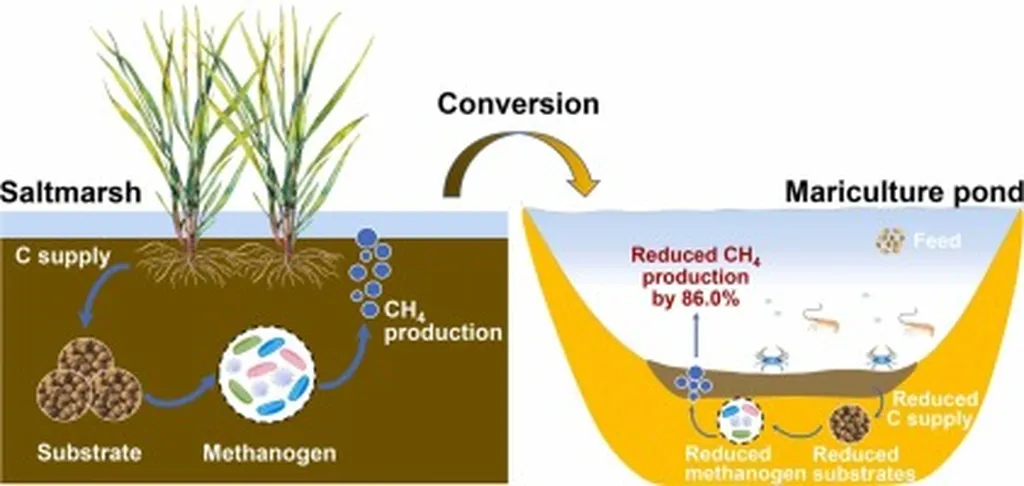In the delicate dance of managing soil salinity, farmers and agronomists have long relied on subsurface drainage systems to leach away excess salts, maintaining soil health and productivity. However, new research published in the Vadose Zone Journal reveals that nearby surface water bodies, such as aquaculture ponds, can significantly disrupt this process, with substantial commercial implications for the agriculture sector.
The study, led by Shuangshuang Yu of the State Key Laboratory of Soil and Sustainable Agriculture at the Institute of Soil Science, Chinese Academy of Sciences, monitored a coastal farm with both rice fields and bare soil patches. After a year of subsurface drainage, the team observed a 49.5% decrease in soil’s apparent electrical conductivity, a proxy for soil salinity. However, the presence of a nearby aquaculture pond complicated the picture.
When the pond was full, it influenced the regional groundwater flow, preventing effective groundwater table control. This, in turn, reduced the efficiency of salt leaching. “Before impoundment, groundwater table control dominated salt leaching,” Yu explained. “But after impoundment, rainfall became the primary factor regulating salinity.”
The findings underscore the complex interplay between different water management strategies and their unintended consequences. For the agriculture sector, this means that the commercial benefits of aquaculture—such as increased protein production—must be balanced against potential drawbacks for neighboring farmlands.
The research also opens up new avenues for integrated water management strategies. As Yu noted, “Coastal farmland salinity management should carefully consider the impact of nearby surface water bodies.” This could involve coordinated water management plans between aquaculture operations and agricultural farms, or the development of innovative drainage systems that can adapt to changing groundwater dynamics.
Moreover, the study highlights the need for further research into the long-term impacts of surface water bodies on soil salinity and subsurface drainage efficiency. As coastal regions around the world face increasing pressure to produce more food and other agricultural products, understanding these dynamics will be crucial for sustainable intensification.
In the meantime, farmers and agronomists are encouraged to monitor their soil salinity levels closely, especially in areas with nearby surface water bodies. Regular soil testing, coupled with adaptive management strategies, can help mitigate potential losses in productivity.
As the agriculture sector continues to grapple with the challenges of climate change, water scarcity, and soil degradation, research like this offers valuable insights into the complex interplay between different land uses and their impacts on soil health. By fostering a deeper understanding of these dynamics, we can pave the way for more sustainable and resilient agricultural systems.

